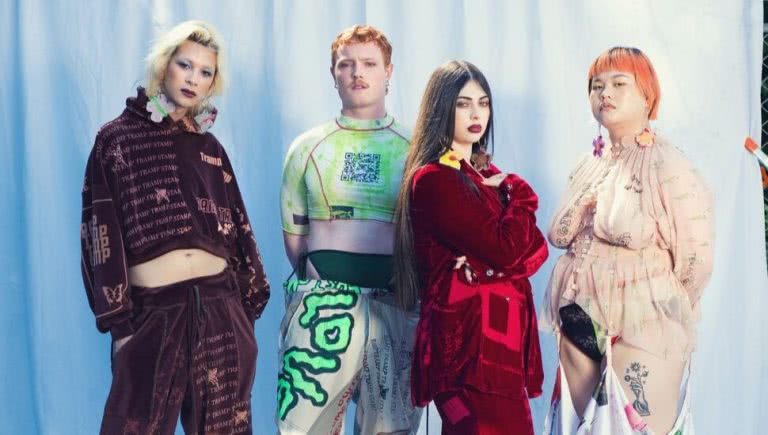Elizabeth Green talks to Niamh Galea, creator of ramptramptrampstamp, all-inclusive, binary-breaking clothing line that brings queer magic to the forefront.
Walk into your favourite clothing store, and you’re immediately faced with a choice. Turn left or turn right. Womenswear or menswear. It’s a choose your own adventure of expression, but one shrouded in ideas of binary and the expectations of gender. But is that a choice that we’ll be faced with in the future?
The fashion industry seems to be more than just dabbling with gender neutrality, with coveted brands like Gucci, Burberry and Ekhause Latta forgoing gender restrictions on their runways. Even the brands that peasants like you or I can afford such as ASOS, H&M and Zara are presenting ungendered collections. Established brands may have all the clout and Instagram followers to make it appear that they are breaking down barriers, but if you look into up and coming designers, you start to see some real queer magic.
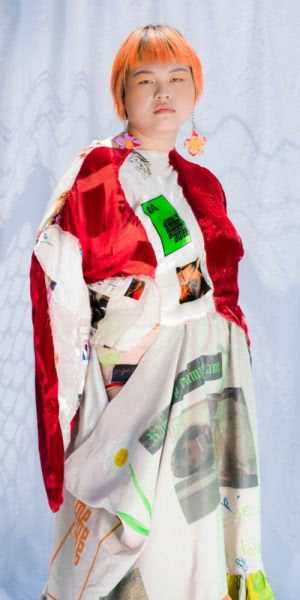
ramptramptrampstamp is the eclectic, indiscriminate clothing line created by Niamh Galea. ramptramp dives straight into our ideas about gendered clothing, and turns them on their head. As you flick through each look, you jump from grunge to gypsy and back again. Billowy silhouettes flow into boxy shoulders which run into a tight corset. Models of all shapes, sizes and orientations thrive in clothing that would give your grandma a heart attack.
The bodies underneath don’t drown in fabric, they float, suspended by Galea’s artistry. You think you understand her style, but then she throws a different fit at you. She doesn’t for a second deny the queer influence in her work, propelling it to the forefront of discussion. When you ask Galea to describe the current gender fluid movement in fashion, she says her favourite way to describe it is with a meme.
“There’s this really great meme from RuPaul’s Drag Race, which asks, “Is it a boy or a girl?” And the answer is, “It’s a piece of fabric.” And I really relate to that ’cause from my perspective, clothing doesn’t really have a gender. You know, it’s clothing. It literally can’t
have a gender. It doesn’t have sexist thoughts or feelings or anything.”
Love Music?
Get your daily dose of metal, rock, indie, pop, and everything else in between.
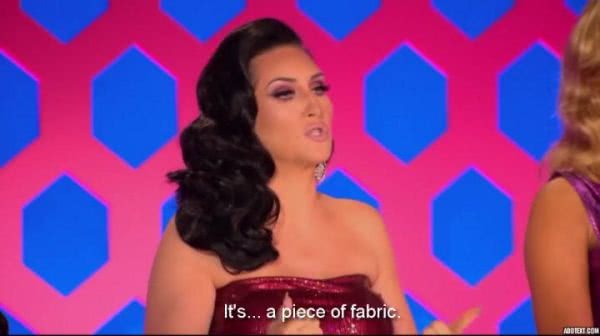
When people ask why there’s a male body in a corseted top or a dress, her response is the same.
“What I would usually say is, it may bring up ideas of gender, or it might reference old ideas of genders that we’ve had in the 20th Century. But it is fabric. It is a piece of clothing. It has no feelings or emotions. All those feelings and emotions you are projecting onto it. It is not a boy or a girl. It is a piece of clothing, and you know, if you want to call that a feminine piece, that’s your problem,” she says.
The playful gender dynamism found in Galea’s designs have always been the bread and butter of queer communities worldwide, sometimes a rebellion from an exclusive and constrictive society, sometimes a display of inner truth. In 2019, Galea argues that queered style is more accessible than it was when Jaden Smith broke the internet wearing a Louis Vuitton skirt.
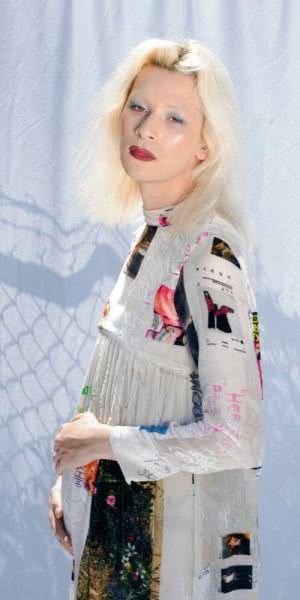
“I was supposed to do this amazing skate film with these 15-year-old bros, I’m talking like BROS. And I was like, “You’re going to be okay to wear a skirt?” and they were so stoked about it. It was not in a funny way, they were taking it seriously,” she tells me when I ask about whether those who are male identifying are becoming more open to traditionally feminine styles.
“Once a designer like Virgil Abloh or Tyla or Gucci legitimises an idea and says, ‘This is expensive, this is designer, this is what fashion is right now,’ it’s gonna trickle down to mainstream people. You know, Kim Kardashian’s wearing Virgil Abloh Louis Vuitton men’s collection. So I will too in whatever way I can access that.”
Though fashion is opening up in terms of gender fluidity and expression, the road towards gender neutrality has been a long one in Galea’s opinion. However, androgyny was focused on putting the masculine in women’s clothing for a really long time. From Coco Chanel popularising and normalising women wearing pants after the WWI era to the boldness of Grace Jones’ ’80s power woman chic’, it’s mainly been women who have adopted masculine styles. They were leaps and bounds for the time, but the more recent LGBTQIA+ movements have made leaps and bounds in terms of true gender fluidity.
Allusions to the barrier-breaking powers of androgyny don’t seem to cut it anymore. Skinny, white models in tones of black, olive, grey, and dark grey are no longer edgy. When everyone is rocking up to the party in trousers, or wearing sweatpants on a cheeky trip to Woolworth’s, another ‘ungendered’ clothing line consisting of white t-shirts and hoodies is just a repeat. For Galea, the idea that androgyny is still pushing the limits of fashions’ consciousness is unfounded.
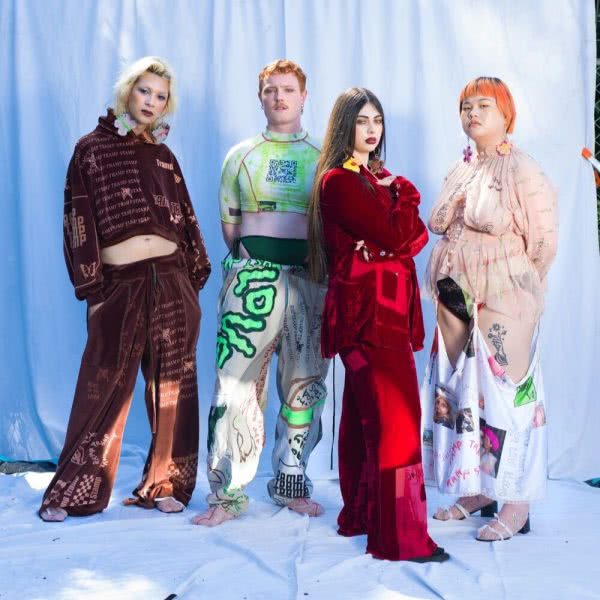
“I guess the term androgyny has never really sat that well with me because it sort of has these implications [that] it’s supposed to mean neutrality, but I don’t know if there really is such a thing as neutral and I think neutral tends to be a more male masculine leaning aesthetic,” she says.
It’s 2019, you don’t have to be pigeon-holed into feminine, masculine, or androgynous, you can do whatever the fuck you want. ramptramp explores complete expression in fashion, disregarding gender norms. Exploring gender fluidity isn’t something that Galea is designing out of the blue, it’s a movement found even in the highest of fashion. The powerhouse fashion icon of Gucci is also making waves in terms of gender expression, forgoing ideas of male and female on the runway under the style leadership of Allesandro Michele.
His flowing and electric designs put on either masculine or feminine bodies have seen the fashion house sit at number 30 on Forbes’ World’s Most Valuable Brands List, with an estimated value of $18.6 billion dollars. So, gender fluidity is making bank. Michele has
transformed the Gucci brand into a glittery symphony of vibrant colour and billowing silhouettes, reaching a fever pitch with the disregard for the gender of the body occupying the clothes. For Michele, it, “seems only natural… it’s the ways [he] sees the world.”
For Niamh, it’s not just a disregard for the gender of who is occupying her fits, she puts explicit thought into the feasibility of her designs for different body shapes. “All the pieces are designed with flexible sizing in mind. So that means that they use elements that mean that they can stretch to fit larger bodies, they can stretch to fit curvy bodies and then they can also shrink down for straight-up bodies or skinny bodies. I don’t think that you should deny that it’s gonna look different on different bodies, but it should look
good on all of them. That’s the challenge,” she says.
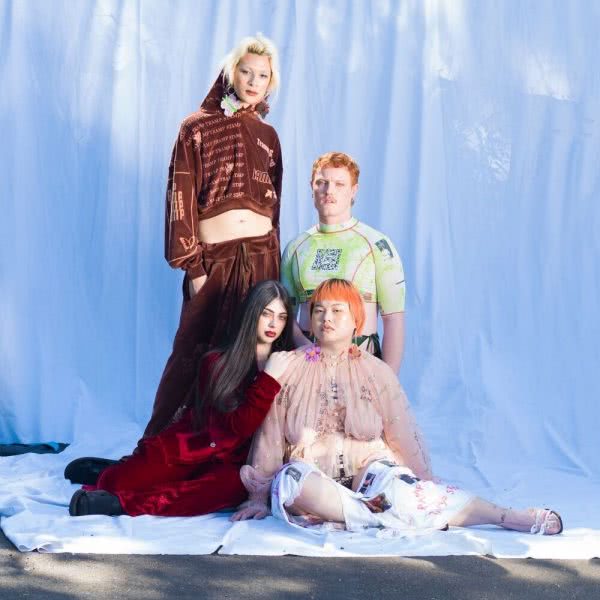
Just take a look at the ramptramptrampstamp Instagram, the bright kaleidoscopic colours are found on many different bodies. You’ll see the same fit on many different body shapes, flowing and billowy for some, and tight and provocative for others. On each person, their body occupies or leaves vacant different portions in the clothing, and the result is a customised silhouette tailored by the wearer’s shape and by Galea’s handiwork.
Corseted structures and cheeky g-string attachments to garments allow for those up to size 18 to wear them. That flexibility in terms of sizing is another result of social movements in fashion, as ramptramp is a size-inclusive clothing brand. Galea desires to see the fashion industry move away from its obsession with sample sizing and to see bigger bodies occupying space on catwalks and in catalogues.
Within ramptramptrampstamp, Galea is ambitious. She knows what change she wants to see in the industry, and her designs are emboldened by her intentions. She wants people to challenge their ideas about gender and clothing, and to mess with them a little bit. From her idea that colour schemes are for wimps, to challenging how we assume clothes are meant to fit certain bodies, ramptramptrampstamp is a bold step for the industry.
































